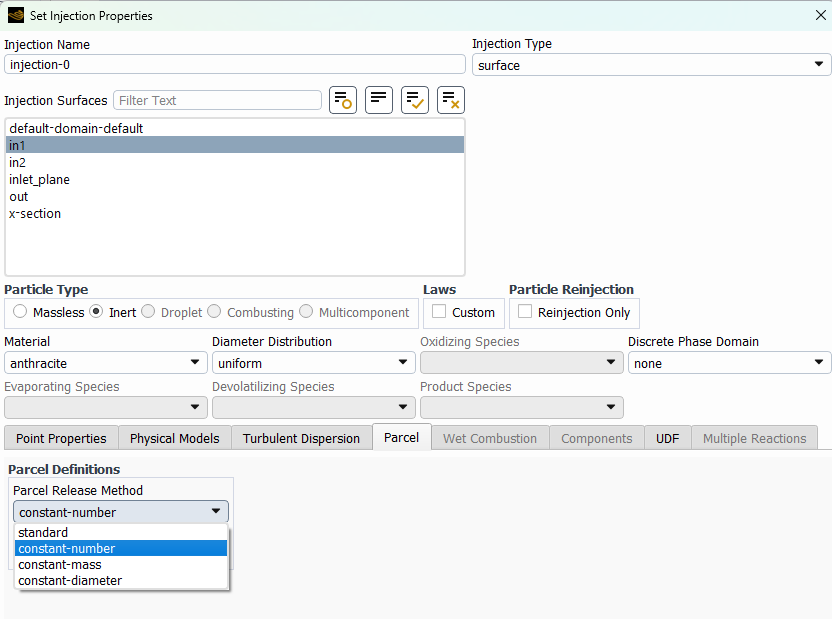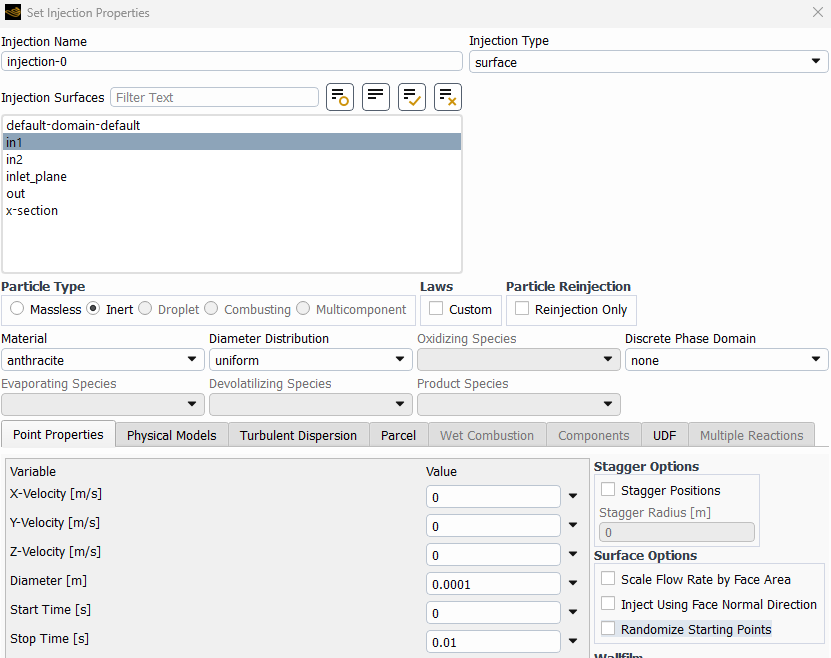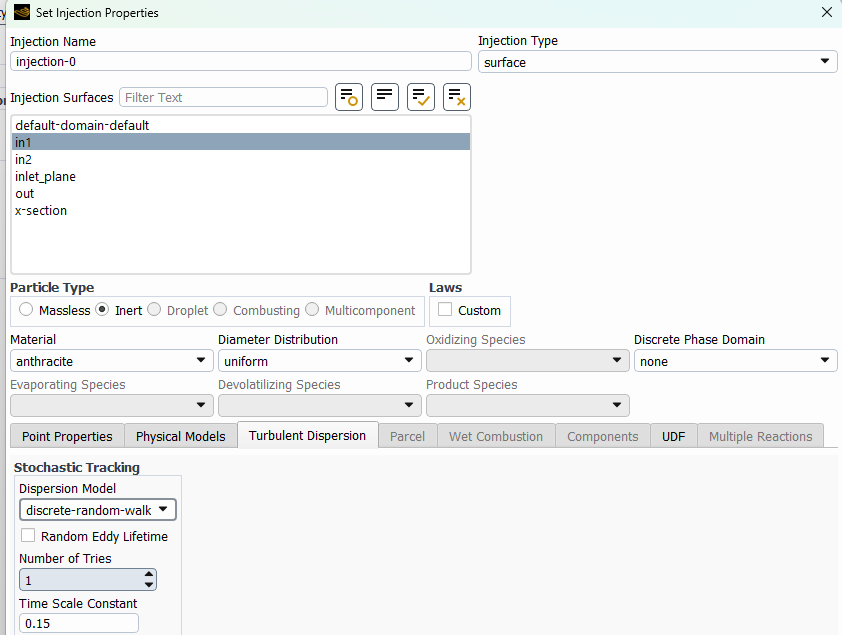TAGGED: dpm, dpm-injection, dpm-tracking, fluid-flow-fluent, steady-state, unsteady-flow
-
-
November 6, 2025 at 12:47 am
gny24002
SubscriberI am doing a dpm injection from one side of a cylinder towards the other side in the axial direction. i currently start with particles of 300 nm diameter and then want to inject other different sized particles ( 5 micron, 10 micron, 30 micron etc). I make the wall as trap boundary to try and see how many particles get trapped for different sizes. To make a proper comparison I want to keep the concentration of particles injected-constant. The solid fraction for the particles when compared to the whole volume of fluid that is flowing is 7%.
My question is, given the solid fraction will be 7%, how do I keep the concentration of particles the same for particles of different diameters? For both steady state and transient study.
-
November 6, 2025 at 5:55 pm
jcooper
Ansys EmployeeHi:
It depends what you mean by concentration: Do you mean the number of particles, or the mass loading? This is an important distinction for DPM, and you will need to control both for an unbiased comparison.
Fluent DPM calculations proceed by using statistically representative particles. By default, Fluent will calculate the number of representative particles to inject from the following relationship:
Number of particles per parcel = (mass flow rate of the particle stream × time step size) / (mass of a single particle)
Fluent measures particle concentration in kg/m^3, which means that the number of particles in 7% by mass of large particles will be lower than the number of small particles. The relationship above will also inject fewer particles as particle size rises. Concentration itself can therefore be controlled by injecting a 7% by mass ratio of particles relative to the entering gas stream. (Total mass of particles/ total mass of gas = 7%) This still leaves an accuracy problem for larger particle sizes (and possibly all the groups) if not enough sample particles are injected, however.
In reality, the number of sample trajectories that Fluent autocalculates are only a small fraction of the number of possible paths a particle can take over the operating time of the injector/device/atomizer, so the result of the trap calculations for most particles will wrong unless you also adjust the number of particles injected.
For transient calculations, you can address this by changing the Parcel Release method for the particles from Standard to Constant Number, so that all particle groups start out with the same number of representatives:
This setting has the effect of “padding” the larger size particle injections with extra trajectories so that a constant number of particles can be injected regardless of particle size. (The extra trajectories are weighted lower statistically by spreading the mass of a single particle mass across several trajectories.)
You can further enhance the statistical variations in the injections by randomizing the starting points:
For steady calculations you can activate Turbulent Dispersion. (The Number of Tries acts as a multiplier on the existing number of trajectories/representative particles allowing you to sample more possible particle paths.) This method also has the effect of adding more trajectories and changing the weighting of each one by spreading you the mass of representative particles:
The goal for each test wlll be to gradually increase the number of sample particles (by increasing the number of tries) in each set until the %mass trapped stabilizes. This is how you will know that you have sampled enough trajectories. The number of trajectories required to get an independent solution may be different for each particle size, with lighter particles likely to require more trajectories.
I hope this helps.
Regards,
Judy
-
- You must be logged in to reply to this topic.


- Basic questions about HPC license
- optiSLang: general question about output variables & expressions
- Keeping concentration same for different sized particles in discrete phase model
- 3-Way System Coupling (Thermal-Structural-Fluid)
- optiSLang & AEDT Optimetrics: response variable has value of 0
- Thermal Desktop: Running RadCAD and SINDA outside of AutoCAD

-
4618
-
1530
-
1386
-
1209
-
1021

© 2025 Copyright ANSYS, Inc. All rights reserved.










